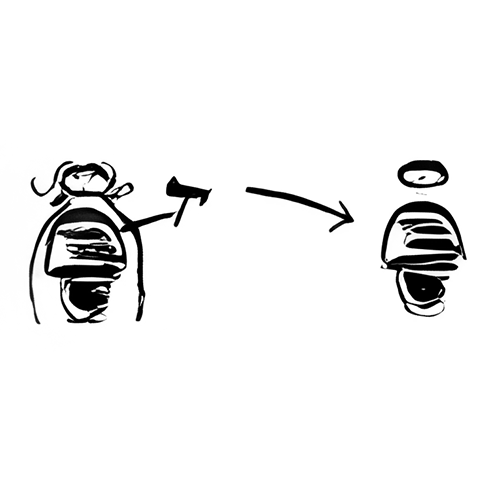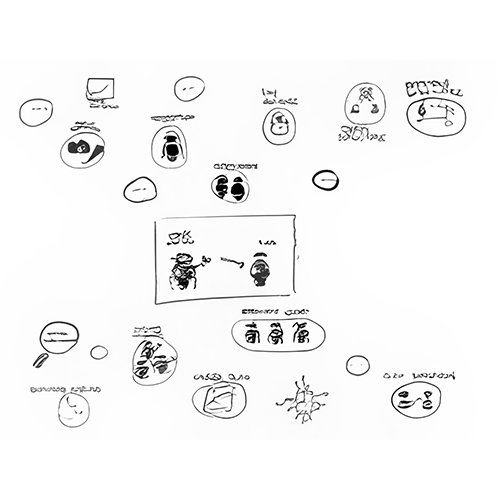Project blueprints
Criminal law decision-making can be imagined as a game of pinball: each sentencing decision is a ball set in motion, navigating a maze of bumpers, levers, and obstacles. Some of these forces, like judicial discretion or legal rules, are visible and well-known, while others remain hidden or unpredictable. Sentrix aims to map the entire pinball surface, tracing how these visible and invisible elements shape the path and ultimate outcome of sentencing decisions.
Sentencing decisions are neither mechanical applications of law nor purely intuitive judgments. They are structured choices, shaped by the environment in which they occur: rules, routines, institutional settings, and the design of legal processes. Drawing from the concept of choice architecture, this project treats sentencing as an environment that guides, frames, and occasionally distorts decision-making. By bringing insights from behavioural science into dialogue with legal and criminological theory, we seek to understand not only individual judicial reasoning but the broader architecture that makes certain choices more likely than others.
1st phase: Unfold the sentencing environment
Before we can understand sentencing, we have to see where it happens. In this first phase, we step back and look at the entire landscape: how decisions emerge from layers of law, psychology, institutions, and human judgment.

APPROACH:
We begin with a wide-angle meta-analysis of literature across disciplines: law, psychology, sociology, and decision theory, put on steroids, using AI to broaden and deepen our reach.

OBJECTIVE:
To map what we call the sentencing environment: the terrain of norms, routines, expectations, and choices that structure judicial decision-making.

OUTCOME:
A conceptual blueprint that reveals this environment’s architecture: its guiding principles, blind spots, and invisible pathways.
2nd phase: Building sentencing typologies
Once the landscape is mapped, we begin to chart its features. What kinds of sentencing patterns exist? How do they connect and differ in different sentencing systems across Europe?

APPROACH:
Through expert panels and collaborative workshops, we test and refine sentencing typologies: checking their logic, scope, and resonance across legal and social contexts.

OBJECTIVE:
To construct a taxonomy that captures how sentencing dimensions cluster, overlap, and occasionally collide.

OUTCOME:
A theoretical framework that makes sense of complexity without flattening it: a shared language for the study of sentencing.


3rd phase: Test the Typologies in Practice
Concepts are only as strong as their reflection in reality. This phase takes us into courtrooms, offices, and everyday practice, to see how sentencing really unfolds.

APPROACH:
We combine quantitative and qualitative methods: analysing case data, observing hearings, interviewing judges and prosecutors, and running controlled experiments that test how different models shape decisions.

OBJECTIVE:
To examine how the frameworks hold up when confronted with real pressures, habits, and institutional constraints.

OUTCOME:
An empirically grounded matrix of sentencing factors that mirrors how decisions are actually made, not just how they are supposed to be made.
4th phase: Visualise and simulate sentencing systems
Finally, we turn the findings into something that can be seen, explored, and even played with.

APPROACH:
We translate empirical results into simulations and interactive visualisations, allowing users to test scenarios and watch how small changes ripple through the system.

OBJECTIVE:
To make sentencing, often opaque and abstract, visible and dynamic, showing how different elements interact and influence outcomes.

OUTCOME:
A living model of sentencing that can inform reform, spark debate, and reimagine how justice systems understand their own decision-making.

+386 1 4203 242
inst.crim@pf.uni-lj.si
Inštitut za kriminologijo
Poljanski nasip 2
1000 Ljubljana
Funded by the European Union. Views and opinions expressed are, however, those of the author(s) only and do not necessarily reflect those of the European Union or European Research Council. Neither the European Union nor the granting authority can be held responsible for them.







